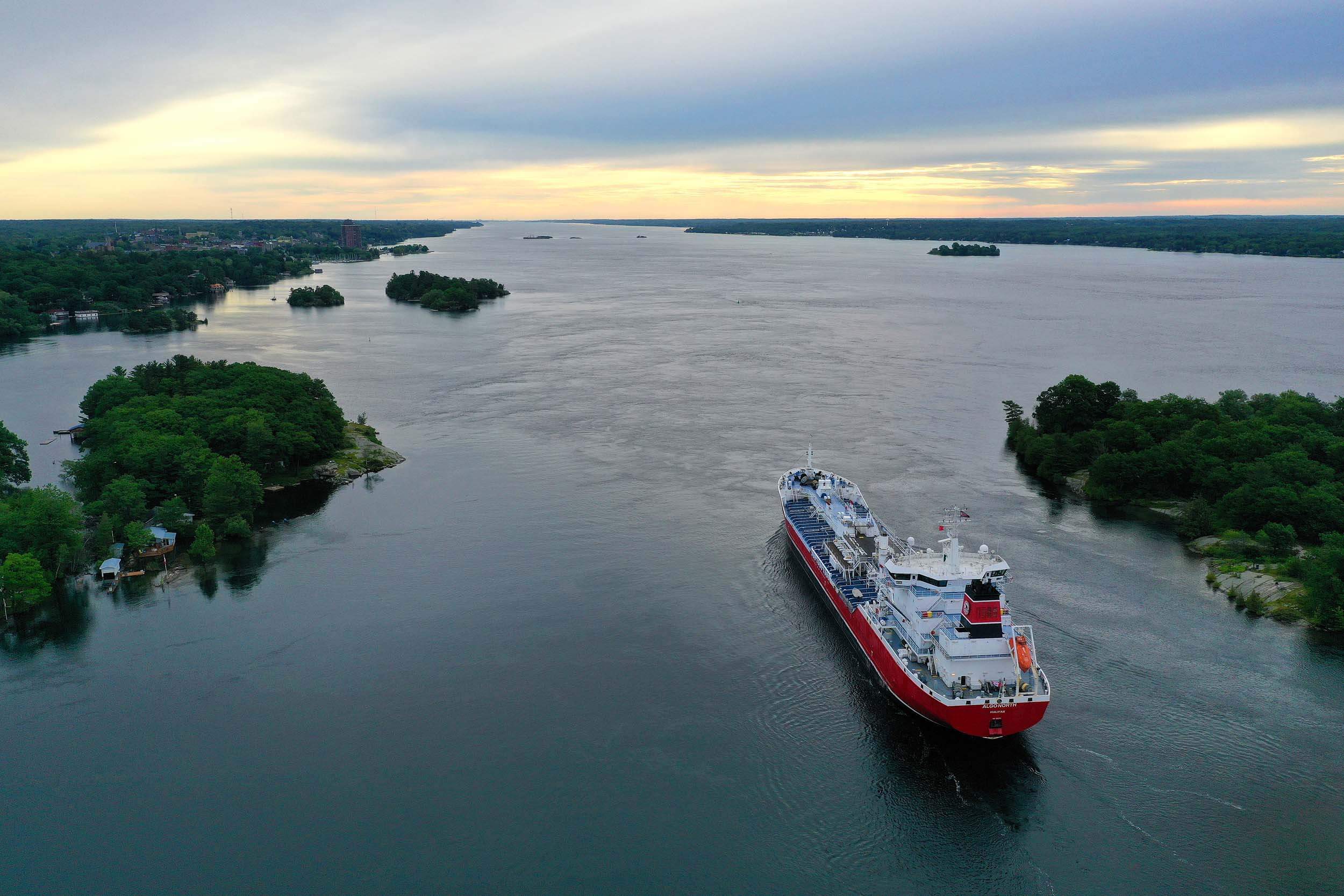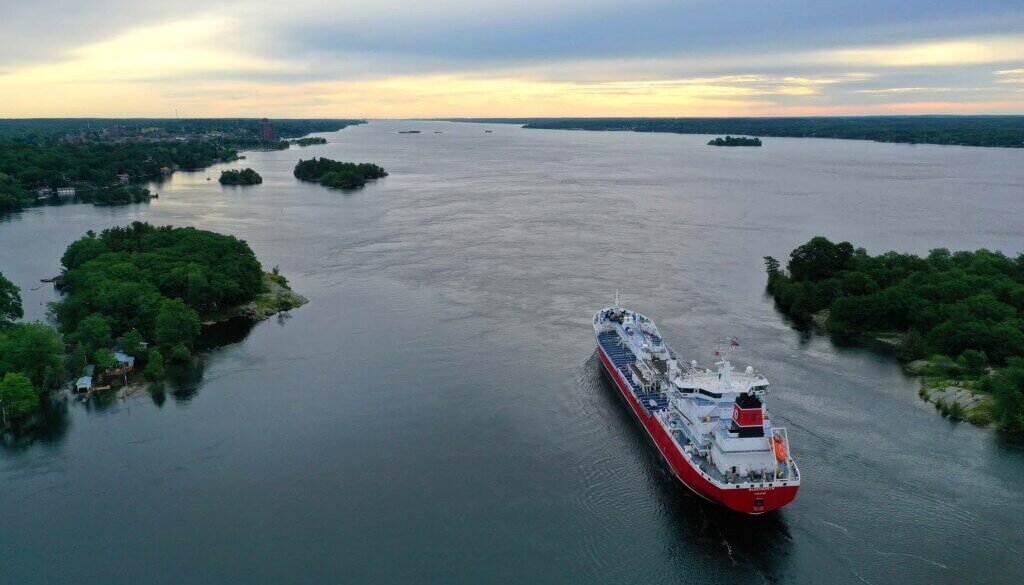There’s no shortage of leisurely activities to enjoy on a sunny day in Brockville, but is there anything more relaxing than watching ships mosey along the St. Lawrence River?
Every day, spectators gather along the waterfront to watch cargo ships the size of football fields travel up and down the St. Lawrence as they inch closer to their destination.
But how do you know when to expect the ships, or how to identify where they’re coming from?
In this article you will learn how to identify vessels, and how to determine the exact minute they will pass by your chosen point of observation so you can have the ultimate boat watching experience in Brockville.
Step #1 Choose the best location
The first step to having the ultimate boat watching experience in Brockville is to choose a location with a clear, extended view of the river.
Blockhouse Island is a popular choice as it lends plenty of different viewpoints of the river that are ideal for boat watching. You can also use the binoculars at the East facing corner of the island to get a closer look at the ships if you don’t have a pair of your own.
View this post on Instagram
Hardy Park is another opportune spot for your own boat watching observatory. Bring a blanket or something to sit on to make yourself comfortable to enjoy a relaxing afternoon of boat watching along the waterfront.
Step #2 Know when the ships are coming
So you’ve decided where you’re going to watch the boats, now you need to find out the best time to go.
Luckily, you can see all of the commercial marine traffic moving East and West bound along the River online on the Marine Traffic map on the Great Lakes St Lawrence Seaway System website.
The Marine Traffic map displays the location of tankers, ferries, and cargo ships in real time, as well as which direction they are heading. This map is a helpful tool for spectators to plan the timing of their trip accordingly, rather than waiting all day to see a cargo ship, only to find out it had already passed earlier that day!

Step #3 Learn how to identify vessels
You’ve got your observation station ready, equipped with some snacks and of course, binoculars! Oh, here comes a big one… Get ready!
But wait, how are you supposed to know what kind of ship it is, or where it’s coming from?
Well, the Marine Traffic Map on the Great Lakes St Lawrence Seaway System website is a great place to start. The map displays the vessels passing through in different colours, which identify the style of vessel. Cargo ships are highlighted in green, tankers are identified as red, tug boats and coastguard vessels are light blue, ferries are dark blue, and sailboats are purple.
On the website you can also see each vessel’s most recent stop, and the estimated arrival time for its next stop. These “stops” are recorded when a vessel goes through a lock. It’s astonishing to think that ships up to twice the size of a football field in length, carrying cargoes the equivalent of 25,000 metric tonnes, pass through these lock systems every single day and eventually make their way past Brockville!
Although it requires a bit of practice, It is possible to identify vessels without using the Great Lakes St Lawrence Seaway System website. However, you will almost certainly require your own pair of binoculars to do this with success.
The most basic tactic is to size up the vessel and try to distinguish some key characteristics. Tugboats, sail boats, and ferries are pretty obvious to see, but when it comes to cargo ships, it gets a bit more complicated to distinguish what’s what.
Tanker Ships

Tanker vessels are designed specifically to transport liquids, like oil and chemicals. Tanker vessels are typically very long and not too tall, and often have some sort of crane on the ship somewhere that you can see from afar, and there will rarely be any containers on the ship.
Average Speed: 20 knots
Bulk Carrier Cargo Ships
View this post on Instagram
Bulk carriers come in small, medium, and large sizes that range from a few hundred tons, to 360,000 tons in weight. A bulk carrier cargo ship transports unpackaged bulk goods and raw materials, like coal, grains, or steel, for example. The goods are stored on the ship below the hatch so you won’t see containers on the surface of these ships either.
These ships are likely to have a foriegn flag painted on the outside of the ship, as more than half of all bulk carrier chips in the world are owned by the Greek, Japanese, and Chinese.
Average Speed: 13 knots
Container Ships

Container ships transport about 90% of the world’s goods, from food, to furniture, to machinery. Container ships are easy to spot because the standardized containers on top of the ship are easy to spot.
Average Speed: 21 knots
Ro-Ro Vessels

“Ro-ro” is short for “roll on, roll off”. These ships are designed to carry cargo that can be rolled on and off the ship, such as vehicles and railroad cars. There are many types of ro-ro vessels, including ferries, cruise ferries, cargo ships, and barges. These vessels are very tall, and usually a rectangular shape
Average Speed: 18 knots



